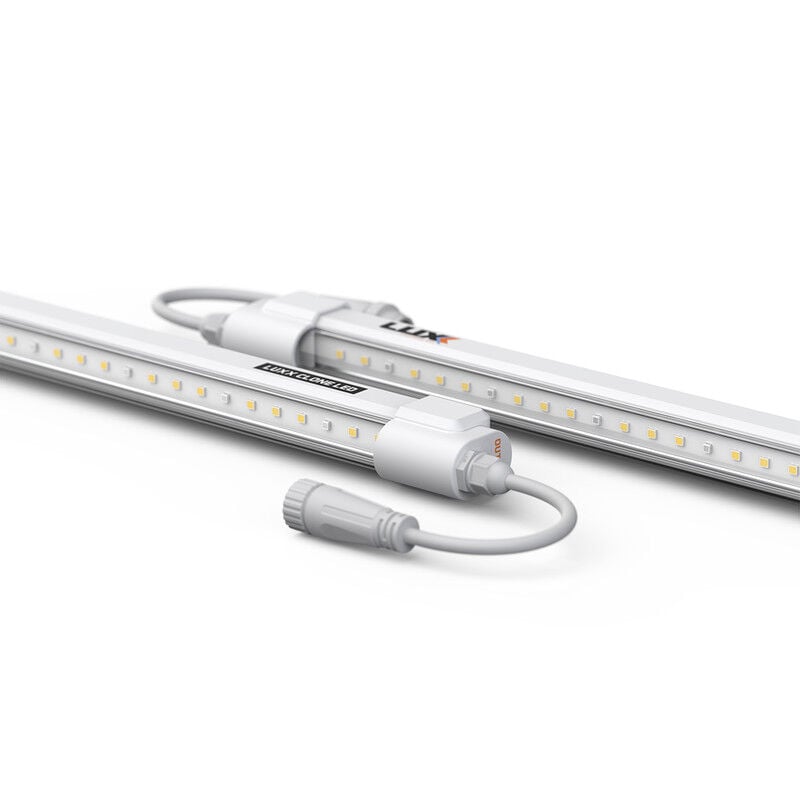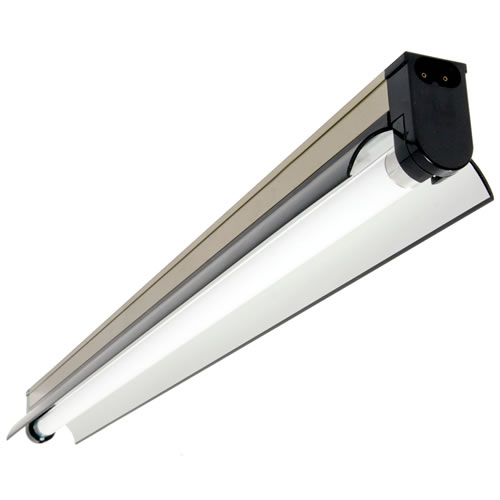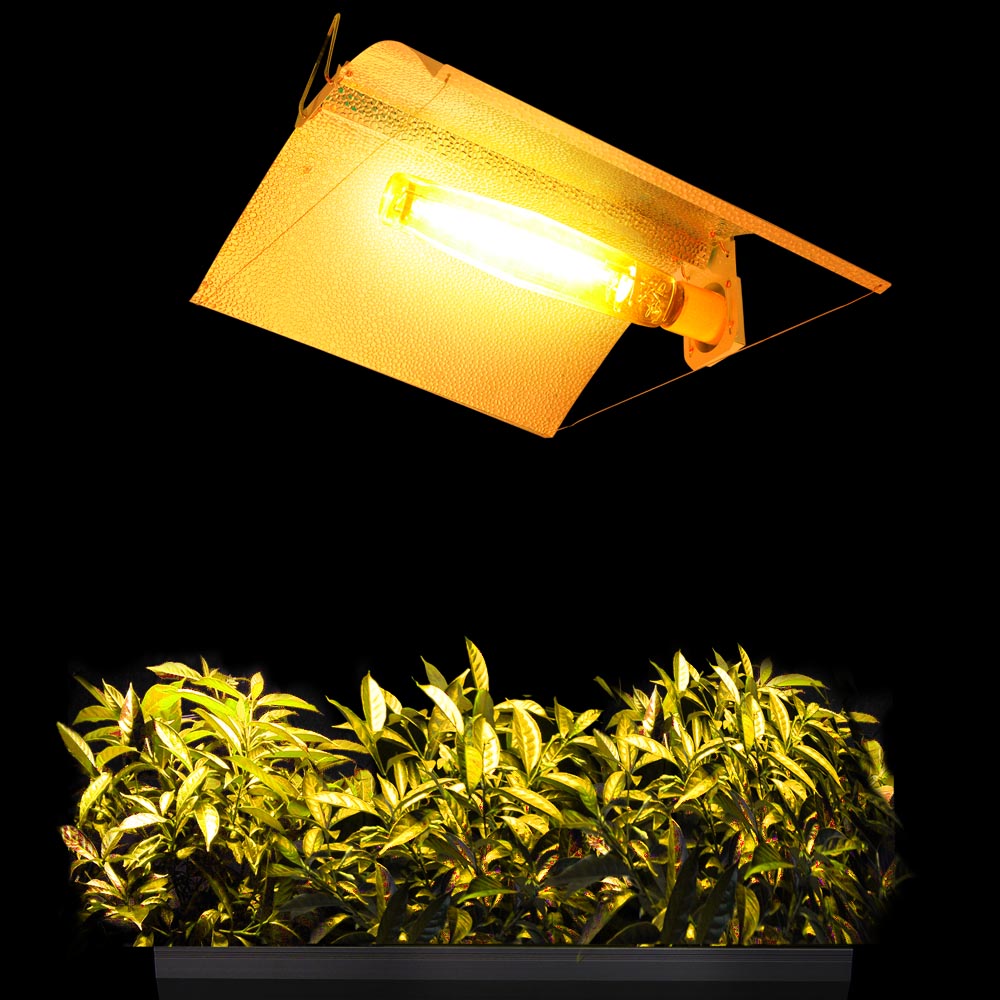Hydroponic Lighting Essentials
Russian botanist Andrei Famintsyn was the first to use artificial light for plant growing and research (1868).
In the vibrant world of hydroponic gardening, the right lighting is not just a requirement—it's the cornerstone of success. Let's take a look at the different types of lights, alongside other lighting basics, to help you elevate your growing experience!
Light Emitting Diodes (LEDs) —
Among the myriad options available, LED (Light Emitting Diode) lighting consistently stands out as the best choice for home gardeners and newcomers to hydroponics. Here's why:
Energy Efficiency and Cost Savings
LED lights are renowned for their energy efficiency. They use significantly less electricity compared to traditional lighting options like HID (High-Intensity Discharge) or fluorescent bulbs. This efficiency translates directly into cost savings on your electricity bill—a critical factor for both new and seasoned growers who are mindful of their budget.
Longevity and Durability
One of the most compelling reasons to choose LED lighting for your hydroponic garden is their longevity. LEDs can last up to 50,000 hours, far outpacing the lifespan of traditional bulbs. This means less frequent replacements, saving you time, effort, and money in the long run. Additionally, LEDs are more durable and less prone to damage, making them a reliable choice for the dynamic environment of a hydroponic setup.
Optimal Plant Growth
LED lights offer a spectrum of light that can be tailored to the specific needs of your plants, promoting healthier growth and higher yields. With the ability to adjust the light spectrum, you can mimic the natural sunlight conditions that your plants would experience outdoors, optimizing their photosynthesis process and enhancing their overall health and productivity.
Heat Management
One of the challenges in hydroponic gardening is managing heat levels. Traditional lighting solutions can generate a lot of heat, which can stress your plants and require additional cooling measures. LEDs, on the other hand, produce significantly less heat, reducing the risk of heat stress on your plants and potentially eliminating the need for extra cooling systems in your growing area.

Eco-Friendly Choice
By consuming less energy and having a longer lifespan, LED lights are a more eco-friendly option. They contribute to reducing your carbon footprint, aligning with the sustainable principles of hydroponic gardening.
For home gardeners and newcomers, navigating the world of hydroponic lighting can seem daunting. However, the benefits of LED lighting—energy efficiency, cost savings, longevity, optimal plant growth, and sustainability—make it a clear winner. Whether you're just starting your hydroponic journey or looking to optimize your existing setup, incorporating LED lights can lead to healthier plants, higher yields, and a more satisfying gardening experience.
At Good Grow, we're committed to helping you make informed decisions about your hydroponic lighting needs. Embracing LED technology is more than just a trend; it's a smart investment in the future of your hydroponic garden.
Fluorescent —
The two main types of fluorescent lights used for growing plants are the tube-style lights and compact fluorescent lights.
For years, fluorescent lights were the go-to choice for many home gardeners and hydroponic enthusiasts. However, as technology advances and more efficient lighting options become available, the once-dominant position of fluorescent lights is fading. Let's explore why fluorescent lights are no longer the top choice for hydroponic gardening.

Energy Efficiency and Operating Costs
While fluorescent lights are more energy-efficient than their incandescent predecessors, they fall short when compared to LED lights. LEDs use significantly less electricity to produce the same amount of light, meaning that over time, the operating costs for LEDs are lower. This efficiency translates into direct savings on electricity bills for hydroponic gardeners, making LEDs a more cost-effective choice in the long run.
Life Span and Durability
Fluorescent bulbs, including CFLs (Compact Fluorescent Lamps), have a shorter lifespan than LED lights. On average, fluorescent lights last about 10,000 to 15,000 hours, whereas LEDs can last up to 50,000 hours. This means that LEDs require less frequent replacement, reducing both the cost and inconvenience of maintaining a hydroponic garden's lighting system. Moreover, fluorescent bulbs are more fragile and prone to damage, further complicating their use in the dynamic environment of hydroponic setups.
Light Spectrum and Plant Growth
Fluorescent lights do provide a broad spectrum of light, which can support plant growth. However, they lack the customization and precision that LEDs offer. LED technology allows gardeners to adjust the light spectrum to the specific needs of their plants, enhancing growth phases and yield. This tailored approach to lighting is simply not possible with traditional fluorescent lighting, making LEDs a superior choice for optimizing plant health and productivity.
Heat Emission
Although fluorescent lights emit less heat than HID lamps, they still produce more heat than LEDs. In a hydroponic setup, managing heat levels is crucial to prevent plant stress and ensure optimal growth conditions. The lower heat emission of LEDs minimizes the risk of heat damage and can reduce the need for additional cooling equipment, making LED lights a more favorable option for small or enclosed spaces.
Environmental Impact
From an environmental perspective, fluorescent lights contain mercury, a toxic heavy metal that requires careful disposal to avoid environmental contamination. This aspect makes fluorescent lights less eco-friendly compared to LEDs, which do not contain hazardous materials and offer a more sustainable lighting solution for eco-conscious gardeners.
The shift away from fluorescent lighting in hydroponic gardening is driven by the need for more energy-efficient, durable, and plant-focused lighting options. LED lights outshine fluorescent lights in virtually every aspect, from operational costs and lifespan to plant growth and environmental impact. As we continue to explore and embrace advancements in hydroponic lighting technology, the goal remains clear: to provide the best possible conditions for our plants while being mindful of our environmental footprint and operational efficiency.
At Good Grow, we're here to guide you through these technological shifts, ensuring that your hydroponic garden thrives under the best lighting conditions. Transitioning from fluorescent to LED lights is not just a trend—it's a strategic move towards more successful and sustainable hydroponic gardening.

High Intensity Discharge (HID) -
There are many different types of HID lights and they are more commonly seen in commercial growing or in large spaces like tall greenhouses. All HID grow lights require an electrical ballast to operate, and each ballast has a particular power rating.
-
Metal Halide (MH) -
A Metal Halide lamp works when an electrical arc goes through a gaseous mix, creating light. With a metal halide lamp, that mix of gases will normally include mercury, xenon or argon, and a variety of metal halides. Metal halide lighting is known for its natural white light, but you can actually find a wide range of colors, depending on the type of metal halide salts used within the lamp.On average, metal halide bulbs also last around ten times as long as traditional incandescent bulbs (15,000 to 20,0000 hours). They are expensive to power though and take time to heat up and cool off when using.
-
Ceramic metal halide (CMH, CDM) -
The difference between MH and CMH lamps is the ceramic or “C” in CMH. This refers to the arc tube material, which is made of a ceramic material—similar to what is used for High-pressure sodium (HPS lamps). This material is more stable than the quartz glass used in MH lamps, along with being able to withstand much higher temperatures and is more resistant to the aggressive salts.By using a higher temperature inside the arc tube, the efficiency, color stability and overall light maintenance are greatly improved. With CMH lamps, because of its design, you get a more balanced spectrum of light, similar to sunlight, which helps your plants grow and develop like they would outdoors.
-
Combination MH and HPS ("Dual arc") -
HPS/MH lights combine a metal halide and a high-pressure sodium in the same bulb, providing both red and blue spectrums in a single HID lamp. The combination of blue metal halide light and red high-pressure sodium light is an attempt to provide a very wide spectrum within a single lamp. -
High-pressure sodium (HPS) - HPS lights typically have red/orange output, which is ideal for flowering.

Light setup and general grow-light tips:
-
Use a timer—Light timers are cheap and will give your plants the consistency they crave with auto on and off each day
-
Don’t put your lights too close but also make sure they aren’t too far away. If your plants don’t have enough light they will become leggy (tall and weak). It is important to start strong with healthy seedlings and young plants for a more abundant harvest later. The proper distance between your full spectrum LED grow lights and plants is important for robust photosynthesis and growth. LED grow light height above plants should be 12 to 24 inches and HID lights should be placed 24 to 60 inches above the top of your plant.
-
Some lights come with clips and stands while others are meant to be hung in a grow tent or from the ceiling directly. Make sure you have a way to hang your light or a way to make them functional for the space and set up you have chosen for your plants already. For example, the lights and setup you use on a hydroponic rain tower will not be the same as what is used inside of a grow tent.
-
Use a light hanger—These ratchet style ropes make it easy for you to raise and lower your lights. This ensures your plants always have optimal lighting and they don’t get too close to the plants as the plants grow bigger and taller.
-
-
Use grow room glasses—Long term exposure and direct gaze at grow lights can affect your vision over time. These glasses will normally have a blue or green filter and will keep the harmful rays from reaching your eyes directly. If you plan to have prolonged exposure to high intensity or bright lights, pick up a pair or two. They are relatively cheap and will ensure you are well protected.
-
Use a tent if needed—Grow tents are great for maximizing your light in a particular space. The reflective surface can help your lights reach more of the plant. It can also increase the temperature around your plants to be careful and make sure to keep track of how hot the grow tent is when possible.
-
For hobby type home grows, we recommend LEDs—For hobbyist home growers looking to optimize their indoor gardens, we highly recommend LED lighting as the top choice. LEDs stand out for their exceptional energy efficiency, longer lifespan, and lower heat emission compared to traditional lighting options. This makes them ideal for small-scale, home-based hydroponic setups where space might be limited and energy savings are a priority. Additionally, the ability to customize the light spectrum with LEDs allows for precise control over plant growth, enabling hobbyists to achieve better results with their crops. Whether you're just starting out or looking to upgrade your home grow, investing in LED technology promises a more sustainable, cost-effective, and fruitful gardening experience.
Before buying a light, try to picture it in your space and think about how you will make it work best for your plants.
